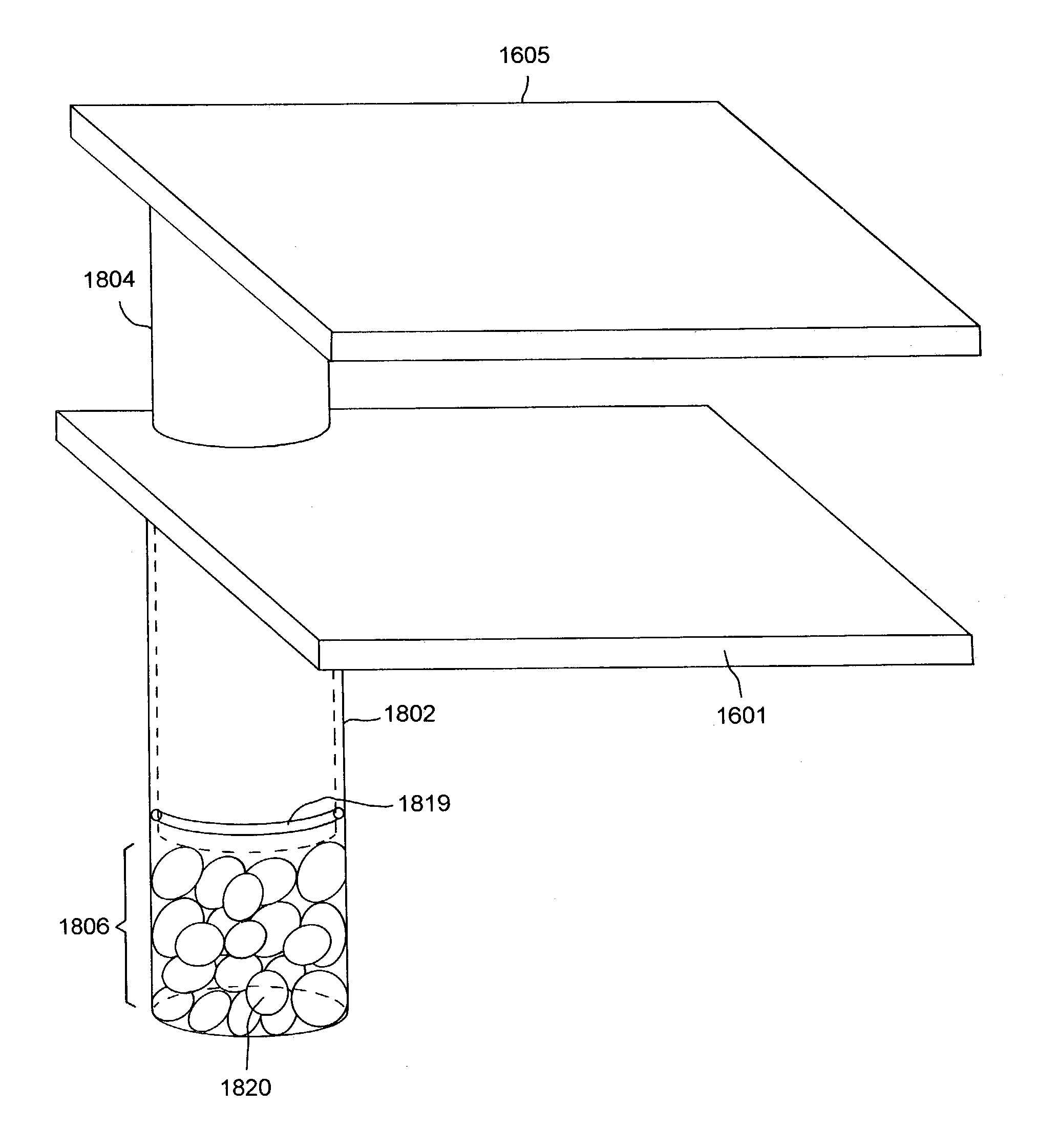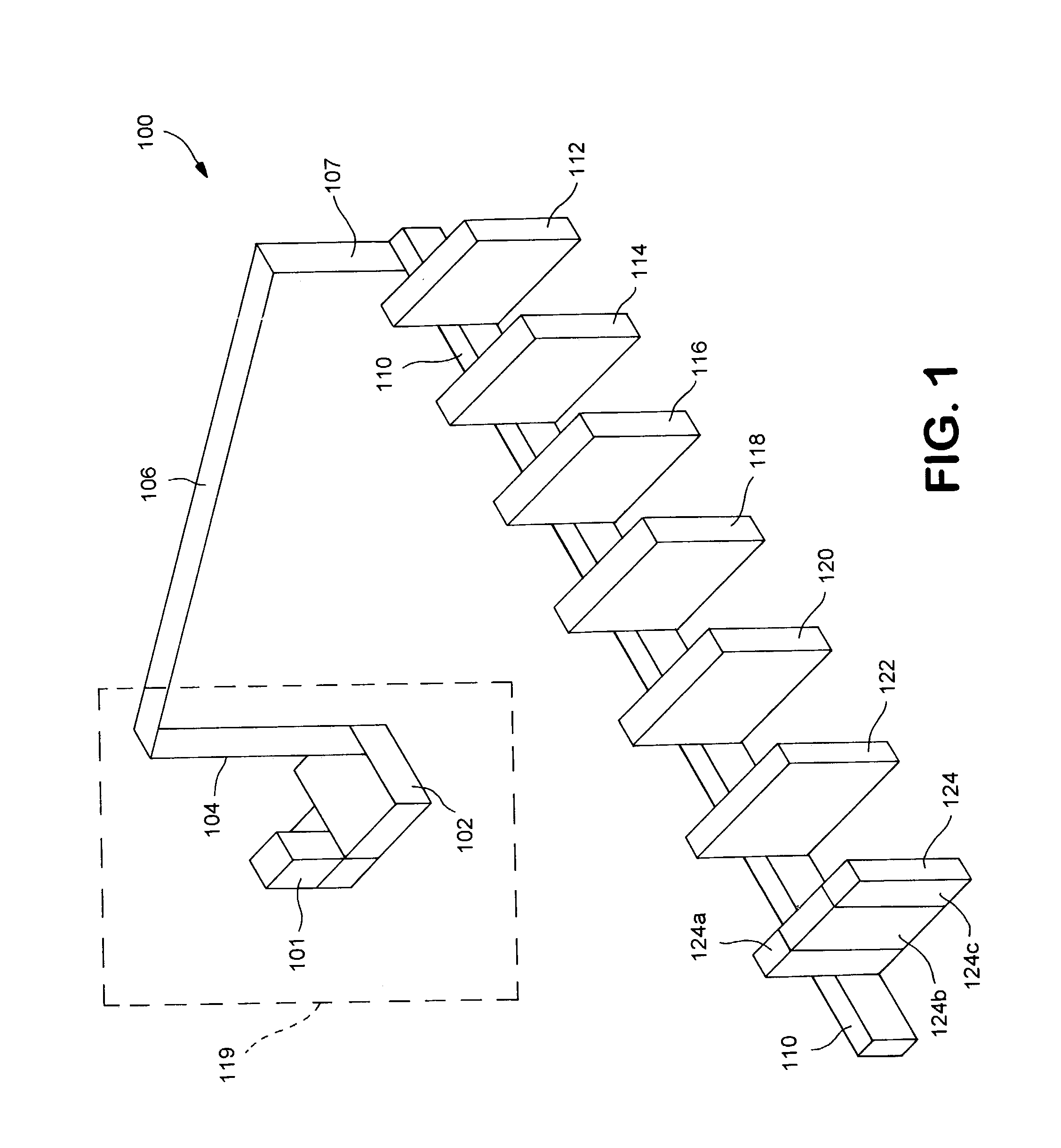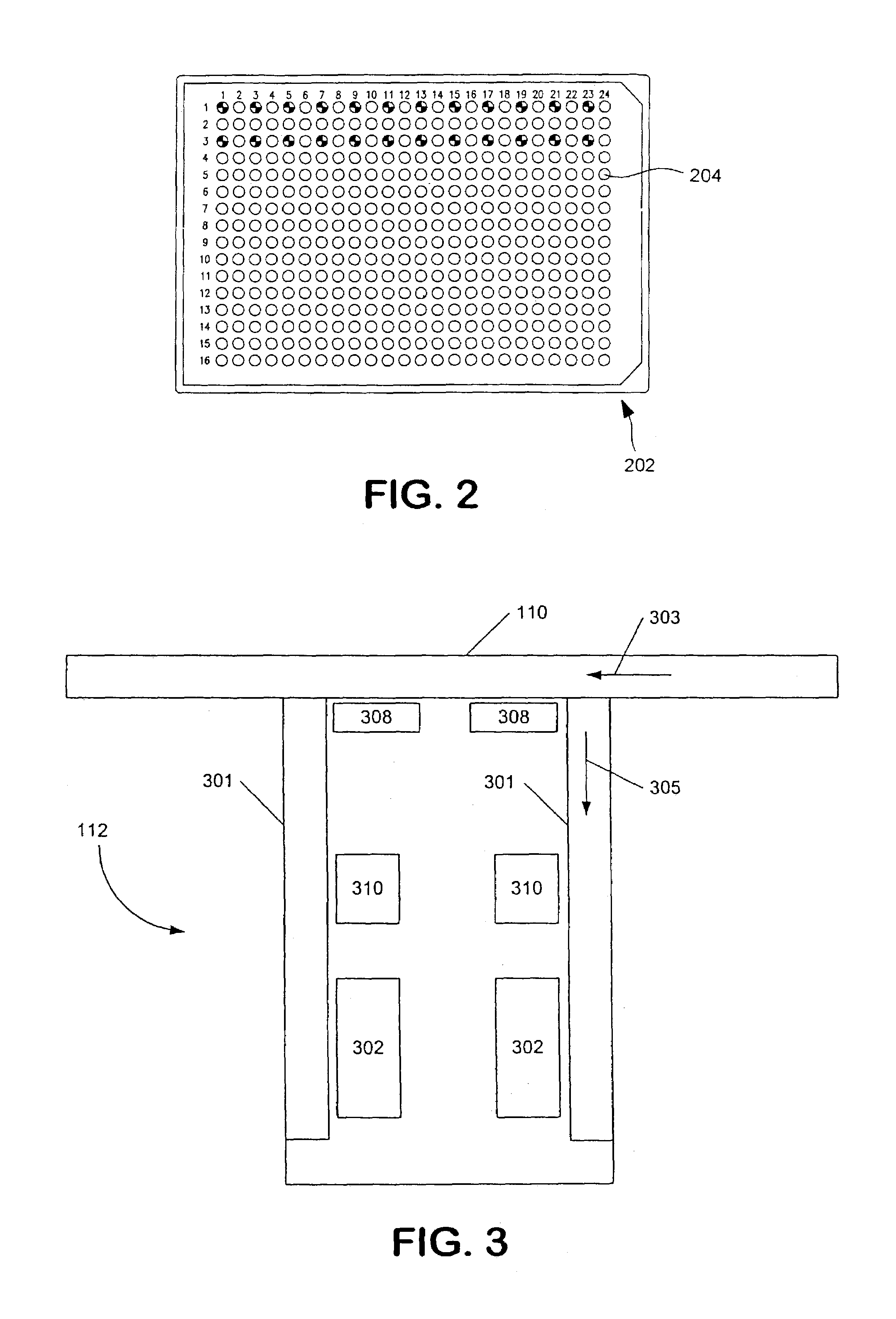Method and apparatus for parallel dispensing of defined volumes of solid particles
a technology of solid particles and parallel dispensing, which is applied in the direction of article feeders, lab clamping means, water/sand/air baths, etc., can solve the problems of affecting the stability of high-throughput systems, bottlenecks that hinder increased throughput, and pin tools that can be problematic for high-throughput systems, etc., to achieve the effect of increasing stability and shelf li
- Summary
- Abstract
- Description
- Claims
- Application Information
AI Technical Summary
Benefits of technology
Problems solved by technology
Method used
Image
Examples
Embodiment Construction
[0076]Unless defined otherwise, all technical and scientific terms used herein have the same meaning as is commonly understood by one of skill in the art to which this invention belongs. All patents, patent applications, published applications and publications, Genbank sequences, Websites, and other published material referred to throughout the entire disclosure herein are, unless noted otherwise, incorporated by reference in their entirety.
[0077]FIG. 1 shows a computer controlled process line 100 that is constructed in accordance with the present invention. The line is sometimes referred to as an Automated Processing System 100, and is controlled by a computer system 101 that keeps track of microtiter plates (MTPs) as they move along the process line. The computer system 101 also controls processing of the MTPs as the MTPs move through various process line modules and work stations. The computer system 101 can be used to specify particular modules that the MTPs will be directed to ...
PUM
 Login to View More
Login to View More Abstract
Description
Claims
Application Information
 Login to View More
Login to View More - R&D
- Intellectual Property
- Life Sciences
- Materials
- Tech Scout
- Unparalleled Data Quality
- Higher Quality Content
- 60% Fewer Hallucinations
Browse by: Latest US Patents, China's latest patents, Technical Efficacy Thesaurus, Application Domain, Technology Topic, Popular Technical Reports.
© 2025 PatSnap. All rights reserved.Legal|Privacy policy|Modern Slavery Act Transparency Statement|Sitemap|About US| Contact US: help@patsnap.com



